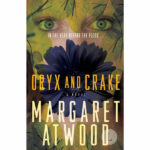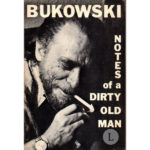Ham on Rye is a semi-autobiographical novel by Charles Bukowski, published in 1982. The novel is a coming-of-age story that follows the protagonist Henry Chinaski, a thinly-veiled version of Bukowski himself, as he navigates his troubled childhood and adolescence in Depression-era Los Angeles. Through Henry’s experiences, Bukowski paints a vivid and often harrowing picture of life on the margins of society, where poverty, violence, and alcoholism are ever-present dangers.
BOOK INFO
version: CLASSIC, EBOOK, AUDIOBOOK
number of pages: 288
literary movement: DIRTY REALISM
time period: post WW II
literary genre: SEMI-AUTOBIOGRAPHY
1st edition: 1982
years of writing: early 1970s
SUMMARY
The novel is divided into three sections, each focusing on a different period of Henry’s life. In the first section, we see Henry as a child, growing up in a dysfunctional family where his father is abusive and his mother is distant and unhappy. Henry’s experiences at school are no better, as he is constantly bullied and ostracized by his classmates.
In the second section, we see Henry as a teenager, struggling to find his place in the world. He spends time working odd jobs, drinking heavily, and experimenting with sex and drugs. As he becomes more disillusioned with the world around him, he begins to withdraw into himself and develop a misanthropic worldview.
In the final section, we see Henry as a young man, trying to make sense of his experiences and find his place in the world. He begins to take his writing more seriously and dreams of becoming a successful author. However, he finds that success is not as easy to come by as he had hoped, and he must continue to confront the many challenges and obstacles that life throws his way.
Throughout Ham on Rye, Bukowski’s writing is raw, honest, and unflinching. He does not shy away from depicting the darker aspects of human nature, but also infuses the novel with a sense of black humor and humanity that makes it a powerful and deeply affecting work. Ultimately, Ham on Rye is a testament to the resilience of the human spirit, even in the face of overwhelming adversity.
MAIN CHARACTERS
Henry Chinaski
The protagonist of the novel, Henry is a stand-in for Bukowski himself. He is an outsider who is bullied and mistreated by his peers, and turns to alcohol to cope with the pain and frustration of his life. Henry is an intelligent and perceptive person, but he is also angry and bitter about the injustices he sees around him.
Henryˈs Father
Henry’s father is an abusive alcoholic who physically and emotionally abuses Henry throughout his childhood. He is a bitter and resentful man who takes out his frustrations on his family.
Henryˈs Mother
Henry’s mother is a kind and caring woman who tries her best to protect her son from his father’s abuse. She is a deeply religious person who finds solace in her faith.
Joyce
Joyce is one of Henry’s few friends in school. She is also an outsider, and is often the target of bullying and harassment from other students. Henry is attracted to her, but is too shy and insecure to pursue a romantic relationship with her.
Frank
Frank is Henry’s best friend in high school. He is a tough and street-smart kid who looks out for Henry and helps him navigate the social hierarchy of their school.
Joe
Joe is a classmate of Henry’s who is popular and well-liked by his peers. He is also a bully who enjoys tormenting Henry and other kids who are weaker than him.
Saxon
Saxon is a fellow writer who Henry meets later in life. He is a successful and respected author who becomes a mentor to Henry, offering him advice and encouragement as he pursues his own writing career.
Lydia
Lydia is a woman that Henry meets at a party. She is beautiful and intelligent, and shares Henry’s interest in literature and writing. They begin a passionate but tumultuous relationship that is marked by frequent arguments and separations.
Laura
Laura is Henry’s first wife. She is a kind and nurturing person who helps Henry get sober and overcome his alcoholism. However, their marriage is strained by financial difficulties and Henry’s continuing feelings for Lydia.
Gertrude
Gertrude is Henry’s second wife. She is a wealthy and sophisticated woman who provides him with stability and security. However, their relationship is marked by a lack of passion and a growing sense of boredom and dissatisfaction.
I guess the only time most people think about injustice is when it happens to them.
CHARLES BUKOWSKI
TOP 10 POINTS
- Coming-of-age Story: Ham on Rye is a coming-of-age story about a boy named Henry Chinaski, who grows up in a dysfunctional family and faces numerous challenges as he navigates his adolescence and early adulthood.
- Themes of Alienation and Loneliness: The book explores themes of alienation and loneliness, as Henry struggles to fit in with his peers and find a sense of belonging in a world that seems to reject him.
- Harsh Portrayal of Childhood: The book is known for its brutally honest portrayal of childhood and adolescence, depicting the difficult experiences that many young people face as they grow up.
- Exploration of Poverty and Social Inequality: Ham on Rye takes a critical look at poverty and social inequality, highlighting the struggles of those who are marginalized and excluded from mainstream society.
- Autobiographical Elements: The novel is largely autobiographical, drawing on Bukowski’s own experiences growing up in poverty and facing various personal and social challenges.
- Raw and Gritty Writing Style: Bukowski is known for his raw and gritty writing style, which is on full display in Ham on Rye. The language is unflinching and unapologetic, often using vulgar and explicit language to convey the harsh realities of life.
- Humor and Irony: Despite the heavy subject matter, Ham on Rye is often humorous and ironic, offering moments of levity and satire amidst the more serious themes.
- Psychological Depth: The book delves into the psychological depth of its characters, exploring their motivations and inner struggles as they face the challenges of life.
- Critique of Societal Norms: Ham on Rye offers a critical perspective on societal norms and values, challenging readers to reconsider their assumptions about what it means to be normal or successful in life.
- Reflection on the Human Condition: Ultimately, the book is a reflection on the human condition, exploring the complex and often contradictory experiences of human existence.
Despite the bleak subject matter, Ham on Rye is also a story of resilience and survival. Chinaski’s sense of humor, his love of literature, and his stubborn refusal to give up on his dreams help him to overcome the obstacles in his life.
Overall, Ham on Rye is a powerful and unflinching portrait of a young man’s struggle to find his place in the world. Bukowski’s writing is both unsparing and compassionate, and the novel remains a classic of modern American literature.
BOOK AWARDS
Time Magazine's All-Time 100 Novels
ABOUT WRITER

Charles Bukowski was a German-American poet, novelist, and short story writer who is considered one of the most important and influential writers of the 20th century. He was born in Andernach, Germany on August 16, 1920, and immigrated to the United States with his family when he was two years old. The family settled in Los Angeles, where Bukowski grew up and spent most of his life.



